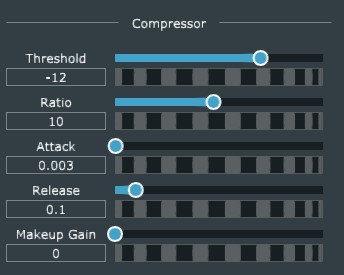Way better slider inputs
Captain's Log: Stardate 77555
Today I implemented a totally new take on the floating point value input system, which formerly I referred to as "Dials," with what I now call "PrecisionSlider." This is 90% working, with a few edge cases and details to work out, and surely some bugs that I haven't yet found.
The underlying problem I'm solving is that some parameters in Anukari vary by several orders of magnitude. Spring stiffness, for example, goes from 1 to 5,000,000. Similarly, delay times can be anywhere from 1/48000th of a second to 1 second. So a regular slider that's, say, 200 pixels wide, doesn't have nearly enough resolution for these kinds of situations.
The Dial solution was workable, but it had some disadvantages. It was a little tricky to use, and hard to explain. But a more annoying issue was that it was not quick to make large jumps in the value, since you had to spin the dial to get anywhere, as opposed to a slider where you can just click where you want it to go.
The new PrecisionSlider solves all these problems by coming a slider for coarse adjustments with a thumbwheel for fine adjustments. For exponential sliders, the thumbwheel adaptively adjusts its sensitivity based on the current slider position, which is the key thing that makes it all work. I tested this with tuning pitch via spring tension, and it had plenty of precision across the whole range of values. Hopefully this is the last time I need to redesign the slider system.... 😄
This is what the new sliders look like with their fine-precision thumbwheels below











 The Audio Units logo and the Audio Units symbol are trademarks of Apple Computer, Inc.
The Audio Units logo and the Audio Units symbol are trademarks of Apple Computer, Inc. VST is a trademark of Steinberg Media Technologies GmbH, registered in Europe and other countries.
VST is a trademark of Steinberg Media Technologies GmbH, registered in Europe and other countries.